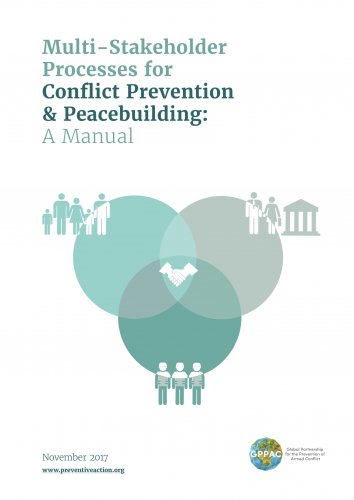Multi-Stakeholder Processes for Conflict Prevention and Peacebuilding: A Manual
ICCN is publishing the translation of GPPAC’s “Multi-Stakeholder Processes for Conflict Prevention and Peacebuilding: A Manual” which includes several parts of the document from English into Russian language.
This comes in the light of the efforts in disseminating GPPAC materials for conflict prevention and to support its members with context-relevant tools for their training. The material is targeted towards communities in Georgia, Azerbaijan and Armenia who live in the conflict and/or conflict prone regions.
It is widely acknowledged that conflict prevention is a challenge that can only be addressed through the combined effort of many different groups, agencies and sectors. Such different groups working together on a common objective, is what makes a multi-stakeholder approach. It assumes that bringing together the resources, knowledge, perspectives, skills and constituencies of the various stakeholders can lead to the political will, collective capacities and sense of ownership needed to prevent conflict and build sustainable peace.
The main benefit of the multi-stakeholder approach is that it allows for a systems approach to conflict, where the different actors and their initiatives are complementary to each other and part of a bigger, complex whole. This can enhance inclusivity and contribute to broader ownership of conflict prevention strategies. There is also much criticism of these assumptions, as well as known risks involved in setting up or participating in a multi-stakeholder process in a conflict context. To address the risks and enhance the possible benefits of such an approach, fundamental questions around legitimacy, power, and ownership must be acknowledged and addressed.
In this manual, defined as multi-stakeholder processes (MSPs) as initiatives that convene three or more stakeholder groups, which together seek solutions and develop strategies around specific conflict prevention objectives. While we refer to techniques and lessons learned from dialogue and mediation, the manual mainly considers initiatives that are ultimately aimed at joint planning and action. These require more intense engagement, agreement on longer-term objectives, and means to ensure follow up and implementation.
Date of publication: 1 November 2017, GPPAC



